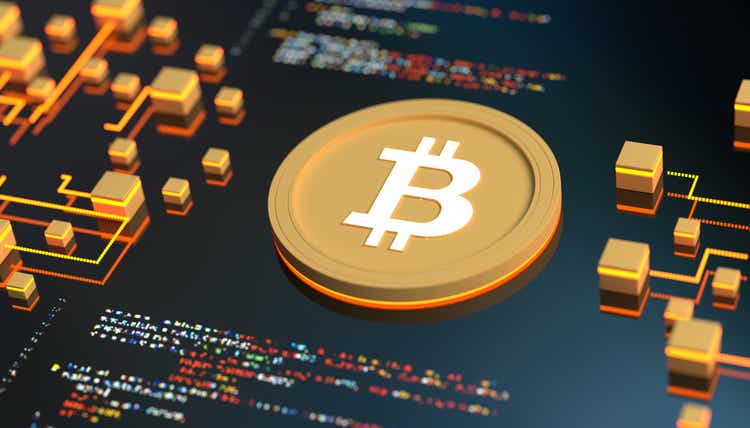
Olemedia/E+ via Getty Images
[size=1.125]The highly-anticipated bitcoin ([color=var(--sa-link-color)]
BTC-USD) halving event in April is poised to negatively impact bitcoin miners' profitability given reduced rewards and higher production costs, JPMorgan said in a recent note, cautioning that bitcoin, in turn, could slide to $42K.
[size=1.125]That would be a ~37% drop from current prices, with BTC changing hands at $66.6K at the time of writing.
[size=1.125]Historically, the bitcoin ([color=var(--sa-link-color)]
BTC-USD) production cost has acted as a lower bound for the underlying token's price. The central point of JPMorgan's estimated production cost range stood at $26.5K, which then would double to $53K post-halving.
[size=1.125]Analyst Nikolaos Panigirtzoglou estimated a 20% decline its the bitcoin ([color=var(--sa-link-color)]
BTC-USD) network's hashrate after the halving, a move that would reduce the BTC estimated production cost and the underlying price.
[size=1.125]“This $42k estimate is also the level we envisage bitcoin prices drifting towards once bitcoin-halving-induced euphoria subsides after April,” the Thursday note said.
[size=1.125]What does this mean for bitcoin ([color=var(--sa-link-color)]
BTC-USD) miners? Miners "with below average electricity costs and more efficient rigs are likely to survive while those with high production costs would struggle.”
[size=1.125]
Publicly-traded BTC miners: Riot Platforms ([color=var(--sa-link-color)]
RIOT), Marathon Digital ([color=var(--sa-link-color)]
MARA), HIVE Digital ([color=var(--sa-link-color)]
HIVE), BIT Mining ([color=var(--sa-link-color)]
BTCM), Hut 8 ([color=var(--sa-link-color)]
HUT), Bitfarms ([color=var(--sa-link-color)]
BITF), Bit Digital ([color=var(--sa-link-color)]
BTBT), CleanSpark ([color=var(--sa-link-color)]
CLSK).
[size=1.125]SA analyst Mike Fay recently [color=var(--sa-link-color)]
laid out a Hold recommendation on CleanSpark ([color=var(--sa-link-color)]
CLSK) stock, which surged some 520% from a year ago. Though the company has maintained high BTC production levels while boosting its BTC reserve before the halving, its "breakeven price has increased significantly and it's only going to get more difficult in the second half of this year when the block subsidy declines."